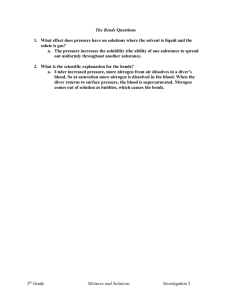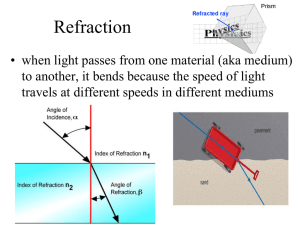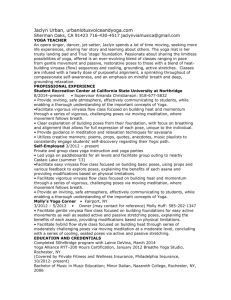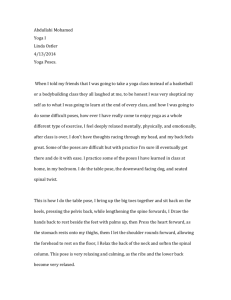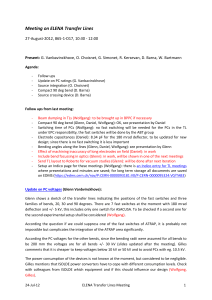The Benefits of Forward Bends
advertisement
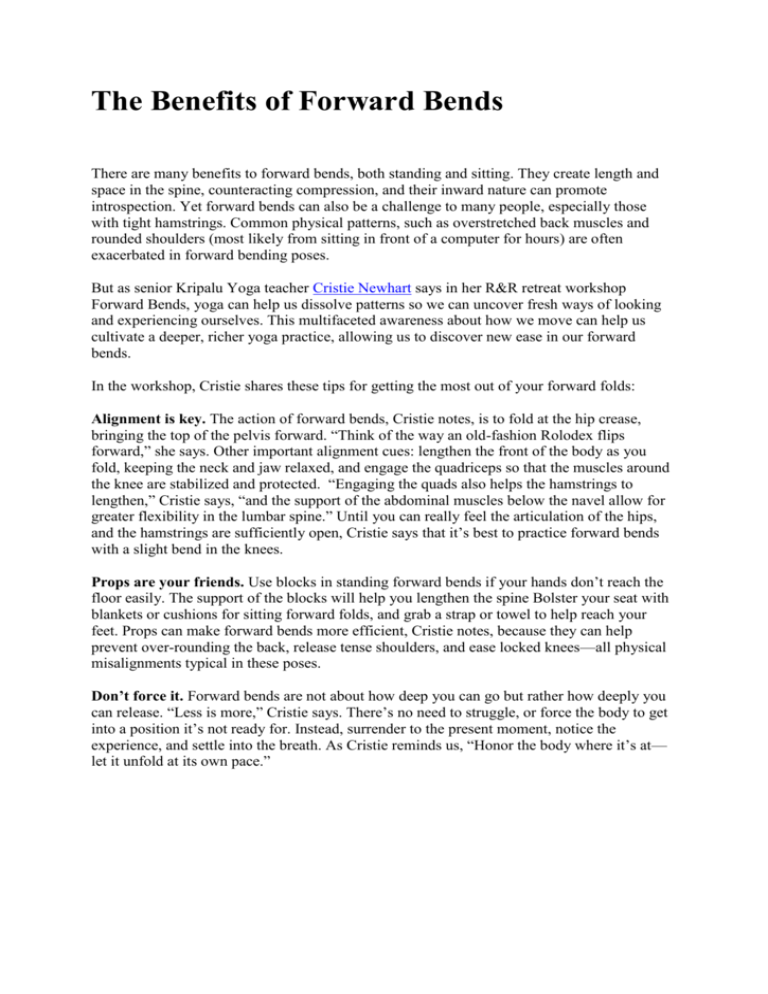
The Benefits of Forward Bends There are many benefits to forward bends, both standing and sitting. They create length and space in the spine, counteracting compression, and their inward nature can promote introspection. Yet forward bends can also be a challenge to many people, especially those with tight hamstrings. Common physical patterns, such as overstretched back muscles and rounded shoulders (most likely from sitting in front of a computer for hours) are often exacerbated in forward bending poses. But as senior Kripalu Yoga teacher Cristie Newhart says in her R&R retreat workshop Forward Bends, yoga can help us dissolve patterns so we can uncover fresh ways of looking and experiencing ourselves. This multifaceted awareness about how we move can help us cultivate a deeper, richer yoga practice, allowing us to discover new ease in our forward bends. In the workshop, Cristie shares these tips for getting the most out of your forward folds: Alignment is key. The action of forward bends, Cristie notes, is to fold at the hip crease, bringing the top of the pelvis forward. “Think of the way an old-fashion Rolodex flips forward,” she says. Other important alignment cues: lengthen the front of the body as you fold, keeping the neck and jaw relaxed, and engage the quadriceps so that the muscles around the knee are stabilized and protected. “Engaging the quads also helps the hamstrings to lengthen,” Cristie says, “and the support of the abdominal muscles below the navel allow for greater flexibility in the lumbar spine.” Until you can really feel the articulation of the hips, and the hamstrings are sufficiently open, Cristie says that it’s best to practice forward bends with a slight bend in the knees. Props are your friends. Use blocks in standing forward bends if your hands don’t reach the floor easily. The support of the blocks will help you lengthen the spine Bolster your seat with blankets or cushions for sitting forward folds, and grab a strap or towel to help reach your feet. Props can make forward bends more efficient, Cristie notes, because they can help prevent over-rounding the back, release tense shoulders, and ease locked knees—all physical misalignments typical in these poses. Don’t force it. Forward bends are not about how deep you can go but rather how deeply you can release. “Less is more,” Cristie says. There’s no need to struggle, or force the body to get into a position it’s not ready for. Instead, surrender to the present moment, notice the experience, and settle into the breath. As Cristie reminds us, “Honor the body where it’s at— let it unfold at its own pace.” The forward bend asanas or postures have a massaging action on the organs in the upper body. Forward bends open up your back, promote total exhalation of air from the lungs by compressing the chest and also help to calm down your mind. The forward bending asanas or postures bend the back to the shape it was when the body was in the womb that is also called the primary curve. This makes some space between the spinal vertebrae that improves the circulation around it and has overall beneficial effects on the body. The nerves from all the different organs in the body pass through the spinal cord and the improved circulation benefits all of them in a great way. The forward bend poses give an internal massage as well as improve the circulation to the various organs like the abdomen, pancreas, liver, intestines and kidneys. They also help to lengthen and strengthen the hamstrings, muscles of the inner leg, make the muscles of the back more supple and boost the strength of the legs and the knees. Forward bend poses help the balancing air, which is known as the Samana vayu. This has beneficial effects on digestion, body temperature, menstruation, childbirth, etc. Slike: predkloni http://www.gaiamtv.com/my-yoga/poses/forward-bends Forward bends are good for digestion and detoxification because the position helps to stimulate the organs to digest food and remove waste and toxins from the organs and tissues of the body. Forward bends also help to stretch and open the hips, back and hamstrings. Another benefit of all forward bend asanas is stretching and lengthening the hamstrings. The degree of flexibility in the hamstring muscles varies from student to student. When performing forward bend poses, it is important to understand the anatomy of the hamstrings and position the legs, hips and sit bones so all three hamstring muscles are stretched. Forward bends are not recommended for all students. People who have suffered accidents or back injury, have sciatica or are pregnant shouldn’t do forward bends. As with any form of exercise, if you have a health condition or injury, seek advice from a doctor, and possibly a trained yoga therapist. Forward bending poses are a staple of any yoga class. They allow for a nice, lengthening stretch throughout the entire spine, shoulders, and pelvis and are therefore often used within a yoga class to realign the spine after twisting and asymmetric poses. Forward bends also tone and strengthen the abdominal muscles. The compression of the abdominal and digestive organs that occurs has a detoxifying effect that can improve and stimulate digestion. Additionally, forward bends are great for stretching and lengthening the hamstrings, calves, and hips making them especially beneficial for athletes such as runners and cyclists. You may have noticed that many yoga classes end with forward bends. This is due to the calming effects that forward bending postures have on the mind and body, which helps prepare you for savasana. When you fold forward, you are turning inward physically, mentally and emotionally, resulting in greater introspection and a sense of peace. These poses are therefore also helpful for reducing anxiety and stress. Please note that forward bends are not recommended for anyone with herniated or bulging discs, sciatica, or sacroiliac pain.
